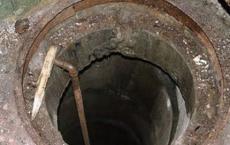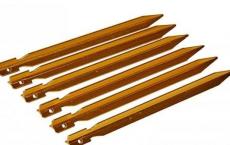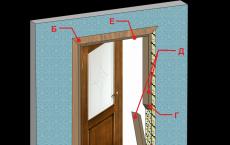How to make a step-ladder made of wood with your own hands: step-by-step instructions and drawings
This mobile version of the stairs has a lot of advantages when compared with various stationary counterparts. The stepladder can be used anywhere and for anything (ceiling or wall processing, changing a light bulb, harvesting fruit), it is convenient to transport (for example, to the country house and back) and store, since this folding structure is quite compact and does not take up much space even in a small-sized apartment.
Taking into account the fact that a household tool set, as a rule, is not very diverse, it is easiest to make a stepladder with your own hands from wood, as the material that is most pliable in terms of cutting and processing.
Do-it-yourself making a priori implies an element of creativity, that is, a free interpretation of various practical tips, if individual provisions are not specifically specified. If the nuances of making a stepladder become clear, then it will not be difficult to draw up your own drawing and assemble a folding ladder using it. Yes, and the choice of wood (by species, length of blanks, cross section) and other materials - at your own discretion.

From the author's point of view, this stage is even more important than the workflow itself. If a person does not know (all the more, he does not know how) how to properly cut and process lumber, what is needed for drilling them, the specifics of choosing a tool for various technological operations (the list of questions can be continued), he will never undertake to make anything with his own hands . As they say, if "not given, then ...". Therefore, it is this point that requires more detailed consideration.
Drafting
The folding ladder is made for various purposes. If it is intended for use in a large room (hangar, warehouse or something similar), then its dimensions should be impressive. Here it is necessary to take into account whether a person can not only reach the topmost rack, but also put something else on it or take it off.

Height
Since do-it-yourself ladders are assembled mainly for domestic use, it is not necessary to make any complex calculations in order to understand that the optimal linear length of a prefabricated ladder is 1.5 - 1.7 m. Perhaps someone thinks differently, therefore appropriate to argue. Taking into account the height of residential (and most utility) premises + the average height of a person, this is quite enough to reach the ceiling even standing on the penultimate step.
The same applies to work in the garden. Pruning of fruit trees is done in different ways, depending on the species, but the recommended maximum height of their crown is from 2.5 to 3.5 m. This applies to apple, cherry, plum, pear, that is, everything that grows on our dachas and adjacent territories. Therefore, it does not make sense to make a large stepladder with your own hands. This is an increased consumption of lumber, and an increase in weight, and the inconvenience of reinstalling alone - there are enough minuses for a massive prefabricated staircase.

tread
For stationary stairs, its value is recommended based on the 45th size. The specificity of using a ladder is that it is not intended to move people, but to work on it. That is, a combination of convenience and safety when performing some operations at height. Therefore, the tread (that is, the width of the step) should not be less than 30 cm. If the upper platform is provided in the design of the ladder, then this parameter can be increased to 40 - 45.

When making a ladder with your own hands for steps, you can take not a board, but bars. Here is one of those designs.

Number of steps
This will have to be determined by yourself. In the first place - the convenience of lifting (descent) on a ladder. As a rule, the distance between the steps is chosen within 25 ± 5 cm. Here, the total height of the folding ladder should be taken into account, as well as the angle at which its “legs” are moved apart (that is, the steepness). In most cases, in the course of calculations, an integer number of steps is not obtained. The way out is simple - to reduce the interval between the first and lower cut of the stringers or the penultimate one and the working platform. If all this is taken into account, the markup is easy to make.
Step length
For a ladder, it changes in the direction of decreasing the height of the stairs. This design is assembled in the form of a pyramid with a truncated top. Therefore, the recommended length of steps (cm) is from 55 (lower) to 35 (upper). This is quite enough to make it convenient to climb the ladder and descend from it.

Material selection
wood species
Here it is worth considering not only the specifics of using the ladder, but also where it is supposed to be stored. For example, if it is needed only for the house, and there is no way to put such a ladder in the pantry, then for an apartment you can make it with the expectation that it becomes an element of the overall interior. For example, collect here according to this scheme.

When folded, the stepladder turns into a comfortable and original chair. In this case, it makes sense to choose more expensive wood. Or a rock with a good texture, which after a certain treatment (, varnish) will take on a wonderful look.



Here are some more good options for the design of folding mini-ladders. They definitely will not become an obstacle in any room, but on the contrary, they will only decorate it and bring an element of originality.

For a ladder that is stored somewhere, it doesn't matter which wood is used. If such a ladder is intended mainly for working outside the building (in the local area, cottage), then you should focus on coniferous species, as they are more resistant to decay. Optimally, taking into account the combination of strength, durability and price - pine.

Quality
The ladder is a loadable structure. The weight of a person, some tools and devices - all this requires the special reliability of the "clamshell". Therefore, wood with significant defects in the form of cracks, chips is clearly not suitable for a folding ladder.

Degree of drying
It's short here. If the tree is not dry enough (with a high percentage of moisture), then it’s not worth doing anything with your own hands from it, and not just a stepladder. No matter how competently it is assembled, after a certain time it will be tritely “led”. Using such a ladder is quite risky.

Linear parameters of blanks
Even with the maximum length of the stringers, a beam with a section of 4 x 4, 3 x 5 or 6 x 6 is sufficient. This will not particularly affect the weight, and the strength of the ladder will be ensured. If you choose a board, you can limit yourself to samples of 15 or 20. Again, when determining the type of lumber, you should focus on the dimensions of the stairs, so it makes no sense to unequivocally recommend specific dimensions.
Accessories
spokes
Their length is determined based on the dimensions of the upper steps and the total thickness of the stringers. But the diameter is at least 8 mm, otherwise such axes will gradually bend.
"Shoes"
It is advisable to put on the lower ends of the stringers, even if the stepladder is made by hand only for garden work. Indoors - even more so, otherwise scratches on the floors cannot be avoided. What to use? Since the material will be subjected to increased abrasion, the best choice is RTI. Felt and the like for a ladder is not the best solution, since this ladder is a mobile option, and it is constantly moved from place to place.
Another thing, what kind of tires to take? If it is a soft variety, then it will wear out quickly, although it is preferable in terms of stability, since it will partially “smooth out” the irregularities of the base. Hard rubber is more durable, but it is somewhat more difficult to install a stepladder with such “shoes” on an uneven surface.
Everything else - fasteners (screws, corners, hinges, plates), glue, cord (connecting chain) will not be difficult to choose on your own, depending on the design features of the folding ladder.
Typical drawings of various ladders

The nuances of making a stepladder with your own hands
For those who are used to doing everything with their own hands, explaining how and with what to sample wood, the specifics of the articulation of the structural elements of the stairs is just wasting time. It is not difficult for a good home craftsman to assemble a stepladder according to the finished drawing. Here are some aspects worth paying attention to.

In the process of marking the stringers, to determine the installation locations for the steps, it is also necessary to designate the drilling points. To ensure strength, in some cases it is desirable to reinforce these structural elements with metal knitting needles. In extreme cases - powerful screws.
Mounting "shoes" also has its own specifics. Firstly, the lower cuts of the stringers need to be slightly rounded. This will increase the convenience of installing the ladder in any place and reduce wear on the heel material (stickers). Secondly, it is necessary to correctly determine the method of fixing the "shoes". If the RTI is elastic enough, then self-tapping screws can be used. Their heads, when screwed in strongly, will “drown” in rubber and will not leave scratches on the floor. But since the dimensions of such fasteners are small, it can tear RTI quite quickly. Therefore, be sure to put a washer under the head.
In the case of using a hard RTI - only landing on glue. It will not work to press the head into such rubber, therefore, it will no longer be the legs of the stepladder that will scratch the floor, but the fastener itself. You can do it like this, from improvised materials.

On the side parts of the stringers (above, closer to the site) it is advisable to fix a pair of hooks. They can hang a bucket of paint, fruit picking utensils, a bag of tools and the like. The fact that a ladder with such devices will be much more convenient to use is obvious. It is not bad to fix at the top and at least one piece of pipe. Better - plastic. You will get a practical case in which you can put a hammer, a long screwdriver or something else that is constantly needed at work.

In order to prevent the “legs” of the step-ladder from accidentally dispersing while a person is on it, the so-called “limiter” is attached to about ½ of the height of the stringers. Home craftsmen often neglect such a device, however, the installed cord (chain or long hook) in most cases prevents falling from the mini-ladder.
In principle, it is not difficult to make a ladder with your own hands according to any drawing. The main thing is to take into account all the nuances of its further application and choose the right size for all elements.
Good luck with your own design and assembly of a folding ladder!



